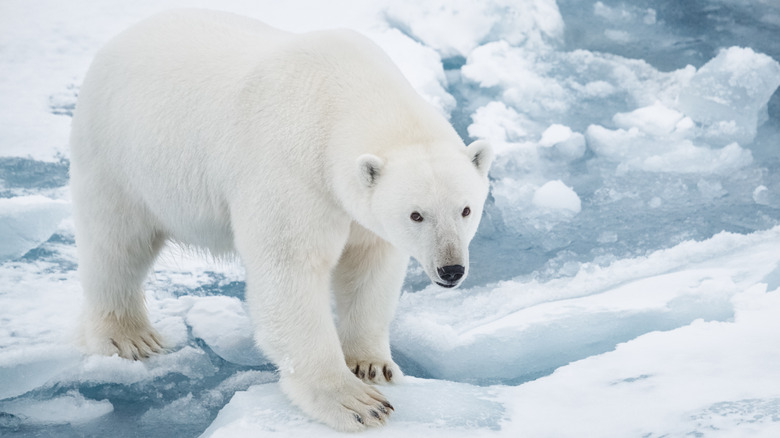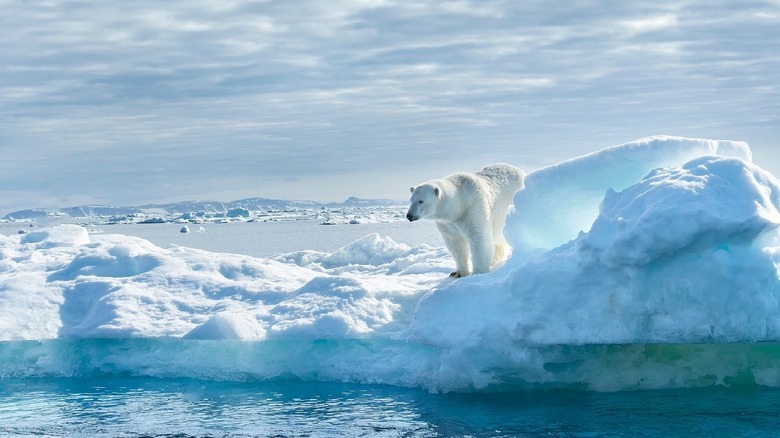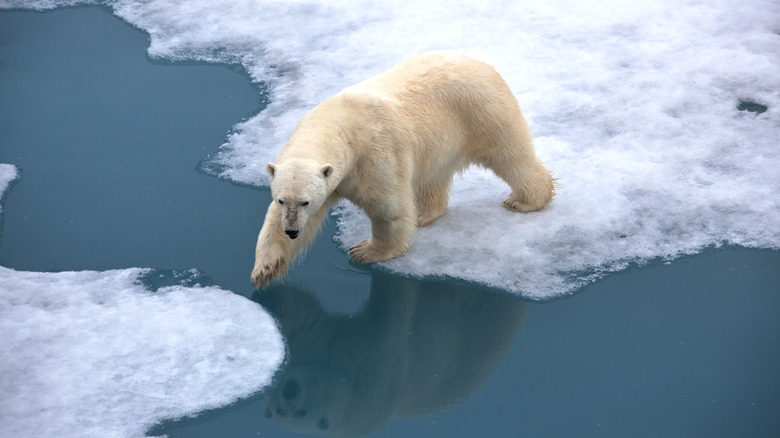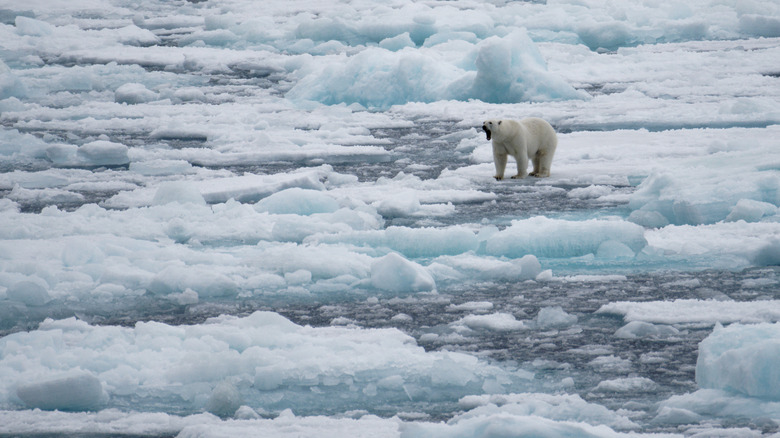This Vulnerable Bear Is Just As Dangerous As A Grizzly
Today, people love bears. We cuddle teddy bears, read children bedtime stories about bear characters, and even vote in an annual competition to see which bear we think is fattest. In the past, however, bears were so terrifying people were afraid to even say the word for bear. It is believed that the word we now use was actually a term meaning "the brown one" and was a euphemism to refer to them without ever having to speak their name (via Time). Our ancient ancestors had good reason to fear bears — they are large and powerful wild animals, deserving of our respect.
In general, grizzly bears are considered to be the most dangerous bear for campers to run into, but under the right circumstances the less-studied polar bear might be just as dangerous to encounter in the wild. In general, people spend less time in the frigid places that the polar bear calls home, so there are very few reported polar bear attacks every year. However, they are the Arctic's top predator, and no matter how beautiful they may be, people traveling through their icy habitats would be wise to give them space.
How common are polar bear attacks?
Polar bear attacks are currently extremely rare. A study published in the Wildlife Society Bulletin in 2017 documented all reported polar attacks since the year 1870. There are only 73 documented attacks, 20 of which were deadly. However, there is a serious concern that as climate change causes more sea ice habitat to be lost, hungry polar bears will be driven into areas that are more populated by humans.
As noted by Geoff York, senior director of conservation for Polar Bears International, as sea ice melts farther from the shore, bears are forced to choose whether they go further north or swim to shore. More and more are choosing to come to land, putting them in contact with people. This is backed up by research that shows that between 2010 and 2014, almost 90% of polar bear attacks took place in the months when sea ice is at its lowest. It's very possible that when sea ice is lower year-round, these attacks could become more frequent, if humans do not learn how to coexist with these massive bears.
What causes polar bear attacks?
Polar bears do not usually have any interest in hunting and killing humans for food, preferring their natural diet of seals, walruses, and beluga whales. Although polar bear attacks are rare, they are devastating. In 2023, a young woman and her baby in Alaska were killed by a polar bear as they attempted to reach a local medical clinic. While no one knows exactly why this occurred, experts believe that this bear attacked for the same reason other polar bears have: it wasn't healthy. In an interview with The Washington Post, Geoff York explained, "Animals in poor body condition are just more likely to take risks. They're more likely to be desperate and to do things that a healthy bear typically wouldn't do. And those are the bears specifically that people have to be worried about."
Hungry and unhealthy young adult male polar bears are the ones most likely to attack. Uniquely, they are even sometimes willing to attack groups of humans, even when there are more than ten people. Other bears, even grizzlies, never attempt to attack groups.
How to avoid polar bear attacks
One factor that is increasing the risk of polar bear attacks is tourism. As conditions in the Arctic become more habitable to people, more and more people who don't have experience being around 1,200 lb carnivores are entering polar bear territory. If you are planning to be in an area with polar bears, particularly when traveling on sea ice, be prepared.
Although polar bears will occasionally attack groups, it's still safer to be with other people than to travel alone. Make noise so that you do not surprise any bears you may encounter. Like with grizzlies, it's important to make sure the smell of food, garbage, and perfumes does not attract bears to your campsite by using bear-resistant containers. If you will be in an area where bear spray is legal, bring it with you and know how to deploy it. If you see a polar bear, do not approach it or run away. If possible, get inside. If not, your group should stand close together, watch, and wait for the bear to move on. If you notice the bear sniffing the air in your direction, it has noticed you. Even if the bear approaches, do not run.



